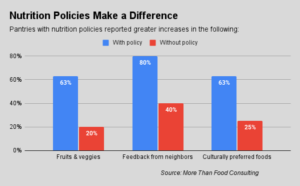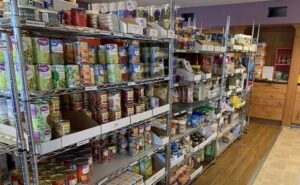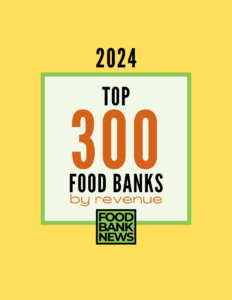There are a lot of ways for food banks to get into Food is Medicine.
For Second Harvest Food Bank Santa Cruz County, the pathway to Food is Medicine involved CEO Erica Padilla-Chavez’s long background in health and human services; a deep dive into community-building during the pandemic, and a relationship with a local nonprofit hospital.
All these things came together to help put Second Harvest Food Bank Santa Cruz County in its current position of getting paid by a state insurer to distribute healthy food to patient populations. In a pilot happening now, the food bank is getting boxes of healthy food to about 20 clients, and expects to scale the program up in the fall.
Second Harvest Food Bank Santa Cruz County is among a small but growing number of food banks that are working with insurance companies to make healthy food more accessible to vulnerable patients – and in the process are receiving revenue streams that help sustain ongoing distributions.

It’s an evolution that makes sense to Padilla-Chavez, who sits on the board of a local hospital and, until coming to the food bank two years ago, headed up a nonprofit focused on family health and well-being. As she put it, “We can really make some magic happen in this county if we expand our partnership with healthcare.”
One of the things that helped set the stage for Second Harvest Food Bank Santa Cruz County’s participation in Food is Medicine is its leadership of a community group, formally known as an Accountable Community for Health (ACH). Such organizations bring together a cross-section of nonprofits and government entities, charging them with the common aim of improving the health and wellness of the community.
As a food bank CEO with deep connections at the county health department, Padilla-Chavez emerged as a natural leader to convene an ACH in response to the pandemic. Post-pandemic, it made sense to continue the work. “Now we have partnerships with a very diverse set of both government and non-government organizations that are lifting up those conversations” about food insecurity and health, Padilla-Chavez said.
More recently, Second Harvest Food Bank Santa Cruz County worked with a local safety net hospital to open one of the few food pantries in the state that operates in a hospital setting. The pantry, called Nourish, provides fresh and healthy food specifically to expectant and new moms (though other patients are also welcome). “That partnership has proven to be really useful in terms of thinking about how we help families throughout the county,” Padilla-Chavez said, adding, “We’re giving them a healthy start.”
Padilla-Chavez’s deep and ongoing experience in the healthcare sector put Second Harvest Food Bank Santa Cruz County in a good position to get certified to provide nutrition-related services under California’s Medicaid 1115 waiver. While the food bank has relationships with a variety of managed care organizations – for example to provide nutrition education to patients and children – “this is the first program where there’s a reimbursement mechanism per patient served,” Padilla-Chavez said.
The food bank has been contracted to provide food boxes, as well as three nutrition classes over the course of three months to various patient populations. In the pilot, patients will pick up their boxes while attending in-person nutrition classes, though the food bank recognizes that home deliveries may be necessary for some patients. Three staff people will be assigned to the program, with each handling caseloads of about 40 people that will turn over every three months.
Padilla-Chavez noted that each managed care entity operates differently, seeking to fulfill a different menu of services. Those differences extend to pricing. In Second Harvest Santa Cruz’s current contract, it is receiving reimbursements of $61 per food box and $40 per nutrition class. That differs from Alameda County Community Food Bank, another Calif.-based food bank providing reimbursable nutrition services (see more here), and from Food Bank of Central and Eastern North Carolina, which is receiving $150 per large food box (see more here).
Despite questions about the variability in compensation from different managed care providers, Padilla-Chavez is upbeat about Food is Medicine “potentially being a good sustainable source of revenue for work that we were already doing.” She added, “Freeing up general fund dollars to procure and maintain the operations at the core of what we do is just smart business.” – Chris Costanzo
PHOTO, TOP: The Nourish pantry at a local safety net hospital in Santa Cruz County.
Like what you’re reading?
Support Food Bank News








